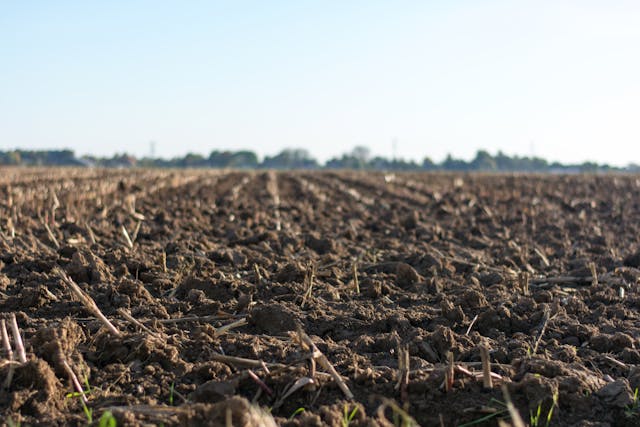
Why is soil pH important? The pH of the soil affects what kinds of nutrients and chemicals can be absorbed by water and then taken up by plants. Some plants like a high pH and some like a low pH.
PH is a way of measuring how acidic or alkaline something is. PH stands for potential of hydrogen because how acidic or alkaline something is depends on the number of hydrogen ions it has. That is why the “p” is a small letter and the “H” is a capital letter. An ion is an atom that has lost its electrons. A hydrogen atom has one electron and a hydrogen ion has no electrons. The pH scale is logarithmic, which means that each step is ten times more than the one before it. A neutral substance has a pH of 7. Water has a pH of 7. Blood has a pH of 8, which means it is ten times more alkaline than water and has ten times fewer hydrogen ions than water. Milk has a pH of 6, so it is ten times more acidic than water and has ten times more hydrogen ions than water. Water is neutral because it has the same number of hydrogen ions and hydrogen atoms. The pH scale is actually reversed because things that are very acidic, with a high hydrogen ion concentration, have a low pH number, bottoming out at 0, and things that are very acidic, with a low hydrogen ion concentration have a high pH number, topping out at 14.
The pH level of a soil can vary greatly depending on where it is, the types of rocks that leach into it, the types of plants that grow there, rainfall, and any human introduced chemicals that are there. Soil in an area with a lot of rainfall will be more acidic because rain picks up carbon dioxide as it comes through the atmosphere, which lowers its pH. Different rocks that break down can affect the pH of the soil. Rocks like granite and quartz are acidic. Rocks like basalt are alkaline. And, of course, there are a lot of chemicals and pollutants that we release into the soil that can change the pH. Those might come from factories, or they might be pesticides and fertilizers that were added to the soil. A lot of fertilizers contain nitrogen, which make the soil more acidic.
The pH of the soil can have a big impact on how well plants will grow there. The biggest reason is it affects the amount and type of minerals that the plants can absorb through their roots. Plants absorb minerals through their roots. To do this, the minerals first need to be dissolved in water. If the soil is too acidic or too alkaline, the nutrients are not able to dissolve into the water. They are still present in the soil, but there is no way for the plants to absorb them. This obviously hinders the plant’s ability to grow. Acidic soils can also be toxic to plants. All soils in the world contain aluminium in different quantities. This can be higher if they are near to a mine or a coal-fired power plant. However, all soils have aluminium and this aluminium is toxic to plants. It generally isn’t a problem because the aluminium stays in the soil and the plants can’t absorb it through their roots. When the soil is acidic, the aluminium becomes water soluble and the plants can suddenly absorb it. This can kill the plant. The same thing happens with other metals as well. An acidic soil can also prevent plants from absorbing calcium and magnesium, two things that they need to grow.
Some soils are more naturally alkaline and some soils are more naturally acidic, but most soils fall in the middle, somewhere between a pH of 5.5 to 8.5. Because of that, there are some plants that have evolved to thrive in slightly more acidic soils and some that thrive in slightly more alkaline soils, but the majority of plants have evolved to be in the middle. This makes sense. Most of the soils are in the middle, so most of the plants are in the middle. Unfortunately, many of the things we are doing to our environment and our farming practices are altering the pH of the soil. That makes a circular problem because fertilizers have to be added to the soil, which affect the pH of the soil, and so on. And this is what I learned today.
Sources
https://www.qld.gov.au/environment/land/management/soil/soil-properties/ph-levels
https://www.montana.edu/extension/broadwater/blog-article.html?id=17581
https://en.wikipedia.org/wiki/Soil_pH
https://agriculture.vic.gov.au/farm-management/soil/soil-acidity
https://en.wikipedia.org/wiki/PH
https://www.news-medical.net/life-sciences/What-Makes-Something-Acidic-or-Alkaline.aspx
https://australian.museum/learn/minerals/shaping-earth/igneous-rock-types
https://sciencenotes.org/the-ph-scale-of-common-chemicals
Photo by Jan Kroon: https://www.pexels.com/photo/eye-level-photo-of-cultivated-land-1000057/
